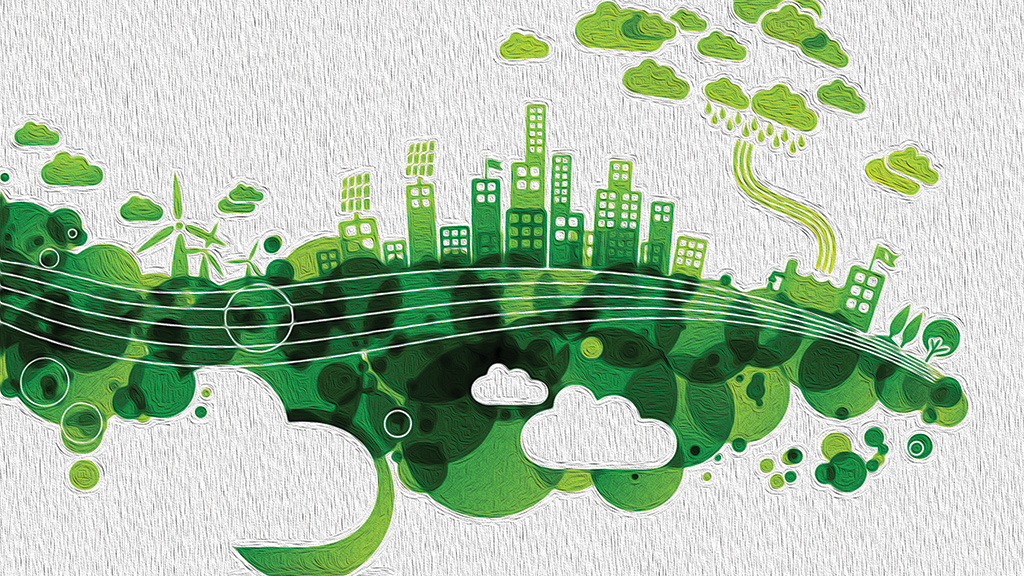
[caption id="attachment_4401" align="aligncenter" width="800"] photo © Amrit Bahadur Chitrakar/Collection Nepal Picture Library[/caption]
photo © Amrit Bahadur Chitrakar/Collection Nepal Picture Library[/caption]
 Sadly, a system that once promised so much collapsed and in December 2001, the then HMG by a cabinet decision, decided to close it down after 27 years of eventful if not great operation. There was one last effort to revive the corporation under the treble management of Kathmandu, Bhaktapur, and Madhyapur Thimi municipalities. After almost 18 months of stoppage, the aforementioned municipalities reached an operating agreement that pledged to do its bit for returning the trolley bus to its former glory. With the revitalisation fund of two million, trolley buses again were seen running. However, the problems that were the cause of its first stoppage remained intact thereby failing to attract pasengers and losing up to 2 million rupees a month. Less than a year the Madhyapur Thimi and Bhaktapur municipalities opted out of the operating agreement forcing Kathmandu Metropolitan City to operate it via the 5 km section within Kathmandu city limits only. A rather limited and unreliable service was maintained during the last few years of operation, with occasional service interruptions due to tremendous losses and perpetual debt. To summarise, the treble management became terrible management due to lack of proper coordination and lack of commitment. Today it is merely an example of another systemic failure.
Although it might be entirely wrong to blame democracy in the decline of a corporation; there are no two opinions on the fact that the trolley bus regressed and ultimately led a sad death with the advent of democracy in Nepal.
Sadly, a system that once promised so much collapsed and in December 2001, the then HMG by a cabinet decision, decided to close it down after 27 years of eventful if not great operation. There was one last effort to revive the corporation under the treble management of Kathmandu, Bhaktapur, and Madhyapur Thimi municipalities. After almost 18 months of stoppage, the aforementioned municipalities reached an operating agreement that pledged to do its bit for returning the trolley bus to its former glory. With the revitalisation fund of two million, trolley buses again were seen running. However, the problems that were the cause of its first stoppage remained intact thereby failing to attract pasengers and losing up to 2 million rupees a month. Less than a year the Madhyapur Thimi and Bhaktapur municipalities opted out of the operating agreement forcing Kathmandu Metropolitan City to operate it via the 5 km section within Kathmandu city limits only. A rather limited and unreliable service was maintained during the last few years of operation, with occasional service interruptions due to tremendous losses and perpetual debt. To summarise, the treble management became terrible management due to lack of proper coordination and lack of commitment. Today it is merely an example of another systemic failure.
Although it might be entirely wrong to blame democracy in the decline of a corporation; there are no two opinions on the fact that the trolley bus regressed and ultimately led a sad death with the advent of democracy in Nepal.
 photo © Amrit Bahadur Chitrakar/Collection Nepal Picture Library[/caption]
photo © Amrit Bahadur Chitrakar/Collection Nepal Picture Library[/caption]
By Suraksha Adhikari
If you grew up in the Kathmandu or visited it during the 80s and 90s, you must have thanked the Chinese Government for its excellent help in setting up those majestic blue trolley buses. As the 32 buses zoomed in and out between Tripureshwor and Suryabinayak, it promised a beautiful dawn of a pollution free transportation that pledged to play its part to curb the ever-increasing urbanisation in the valley. Sadly, the present scenario is all about a few rusting buses laughing at our incompetence.THE HISTORY
For the uninitiated, a trolley bus or trolley coach is a bus that runs on the electric power. It is primarily an electric bus that gets its power from wires that are overhead, generally suspended from the roadside posts. Although the trolley bus first popped into this world in 1882 when Dr. Ernst Werner Siemens demonstrated his "Elektromote" it was only in 1975 when the locals of Kathmandu saw a new means of transportation.The 13 km long trolley bus system that connected Kathmandu with Thimi and Bhaktapur was the result of utilisation of technical expertise and a grant of 40 million by the Chinese government. It was considered to be the second critical phase in the development of electricity based transportation in the country. It perfectly made sense as a country rich in water resource, it was apt for Nepal to move from petroleum based transport to electricity based. The trolley bus system with 15 stations between Suryabinayak and Tripureswor was immensely popular among people residing in those areas. Babu Kaji Maharjan, now a 52 year old businessman fondly recalls the 80s when he used to travel with his then girlfriend on the trolley. Beaming with fond memories, he says there were days when he used to travel ten times a day with his girlfriend. Not only was the fare cheaper but the staff at that time were hospitable too. Vindicating the voice of Maharjan, trolley buses at that phase provided services to about 88% of the people traveling between Kathmandu and Bhaktapur. As its popularity increased, buses were added with the number of passengers rising from around 11,000 to 20,000. There were days when the trolley bus system even operated for 16 hours per day. Slowly and steadily, the trolley bus system was seen as an epitome of how a government based corporation should be run. As it was chalking profits year after year, voices of expanding it to other parts of the valley became loud.WHAT THEN WENT WRONG
A former senior member of then Nepal Trolley Bus Service (NTBS), a branch of the Nepal Transportation Corporation (NTC), under condition of anonymity, tells the advent of democracy might have brought positive changes in other fields, but for the trolley, it was the nail in the coffin. Sadly the nails kept adding. With freedom of expression and protests, bandhs, chakka jams, hadtals and todfod every facet of life was affected by the engulfing political system. The culture of these demonstrations severely hampered the operation of the trolley bus. Every time there was a protest the trolley bus bore the brunt. Moreover, ministers from all parties started using the corporation as an employment center to make their political cadres happy. It took no time for the corporation to turn from an efficiently run organisation to a bloated organisation that had almost four times more than the employees needed. If these two problems were not enough, the subcontracting of passenger fare collection to the drivers (Rs. 425 per trip for smaller and Rs. 475 for the bigger buses) resulted in a situation where the drivers took a significant chunk of the earnings. It led to a situation where the employees became wealthy, and the corporation became poor. The overstaffing and low productivity sandwiched the poor corporation taking all the juice out of it and reduced its financial viability. The deterioration in finance led to the deterioration of maintenance ruining the entire system. Sadly, a system that once promised so much collapsed and in December 2001, the then HMG by a cabinet decision, decided to close it down after 27 years of eventful if not great operation. There was one last effort to revive the corporation under the treble management of Kathmandu, Bhaktapur, and Madhyapur Thimi municipalities. After almost 18 months of stoppage, the aforementioned municipalities reached an operating agreement that pledged to do its bit for returning the trolley bus to its former glory. With the revitalisation fund of two million, trolley buses again were seen running. However, the problems that were the cause of its first stoppage remained intact thereby failing to attract pasengers and losing up to 2 million rupees a month. Less than a year the Madhyapur Thimi and Bhaktapur municipalities opted out of the operating agreement forcing Kathmandu Metropolitan City to operate it via the 5 km section within Kathmandu city limits only. A rather limited and unreliable service was maintained during the last few years of operation, with occasional service interruptions due to tremendous losses and perpetual debt. To summarise, the treble management became terrible management due to lack of proper coordination and lack of commitment. Today it is merely an example of another systemic failure.
Although it might be entirely wrong to blame democracy in the decline of a corporation; there are no two opinions on the fact that the trolley bus regressed and ultimately led a sad death with the advent of democracy in Nepal.
Sadly, a system that once promised so much collapsed and in December 2001, the then HMG by a cabinet decision, decided to close it down after 27 years of eventful if not great operation. There was one last effort to revive the corporation under the treble management of Kathmandu, Bhaktapur, and Madhyapur Thimi municipalities. After almost 18 months of stoppage, the aforementioned municipalities reached an operating agreement that pledged to do its bit for returning the trolley bus to its former glory. With the revitalisation fund of two million, trolley buses again were seen running. However, the problems that were the cause of its first stoppage remained intact thereby failing to attract pasengers and losing up to 2 million rupees a month. Less than a year the Madhyapur Thimi and Bhaktapur municipalities opted out of the operating agreement forcing Kathmandu Metropolitan City to operate it via the 5 km section within Kathmandu city limits only. A rather limited and unreliable service was maintained during the last few years of operation, with occasional service interruptions due to tremendous losses and perpetual debt. To summarise, the treble management became terrible management due to lack of proper coordination and lack of commitment. Today it is merely an example of another systemic failure.
Although it might be entirely wrong to blame democracy in the decline of a corporation; there are no two opinions on the fact that the trolley bus regressed and ultimately led a sad death with the advent of democracy in Nepal.
SHOULD IT MAKE A COMEBACK
A poll was conducted among 1500 people residing in between Suryabinayak and Tripureshwor asking if the trolley bus should be revived. An overwhelming 70% answered YES. Likewise, if 20% people thought that it made no sense to revive the trolley bus the remaining 10% were clueless about its revival. The trolley bus has numerous advantages over regular buses. Since they run on electricity rather than fossil fuels, they emit no fumes.The money spent on buying fossil fuels like petrol and diesel can be saved by utilising the country’s own abundant source of hydroelectricity. In addition to that, trolley buses are quieter, smoother, cleaner, and accelerate. Moreover, they offer a sense of permanence that regular buses cannot match. Yet, all over the world, only around 300 cities operate trolley buses with no new trolley bus system in the new millennium. The primary reason for trolley bus system being a rare phenomenon is its overhead wire. These over headed wires are not only expensive but seriously limit the bus route flexibility. They are an ugly addition to the city when the focus is on making the city beautiful. Moreover, in today’s time, there are better electric vehicle solutions with the invention of more mobile and attractive vehicles There have been few renaissances all over the world with trolley buses. However, all of them had a stable base to work on the revival. In the case of Nepal, it is precisely the opposite. With almost zero infrastructure barring the land and building for the main office, it is reconstruction all over from scratch. Therefore, the primary question that arises is, In quest of implementing pollution free transportation, is trolley bus the most viable answer? The general public consensus is an overwhelming revival of trolley bus as they feel there is no bigger joy than reviving something that had made a cult status in the past. After the successful revival of Sajha buses, there is the notion that trolley buses should be next to follow. Reality however displays a different picture. Although the government in many of its interim plan talked about trolley buses revival and expansion, not a single step has been taken. Even the consensus among bureaucrats is that a lot of water has passed under the bridge. They feel trolley buses are no longer relevant especially after the successful execution of safa tempos and electric buses. Moreover, the overall cost of resetting the trolley bus is huge which makes no sense in today’s time where the focus is more on other means like metro rail. To conclude, although there might be public hope for trolley bus revival, the government seems adamant in pouring cold water.
Published Date: September 14, 2017, 12:00 am
Post Comment
E-Magazine
RELATED Feature



-1761806697.jpg)
-1758006240.jpg)
-1752225714.jpg)